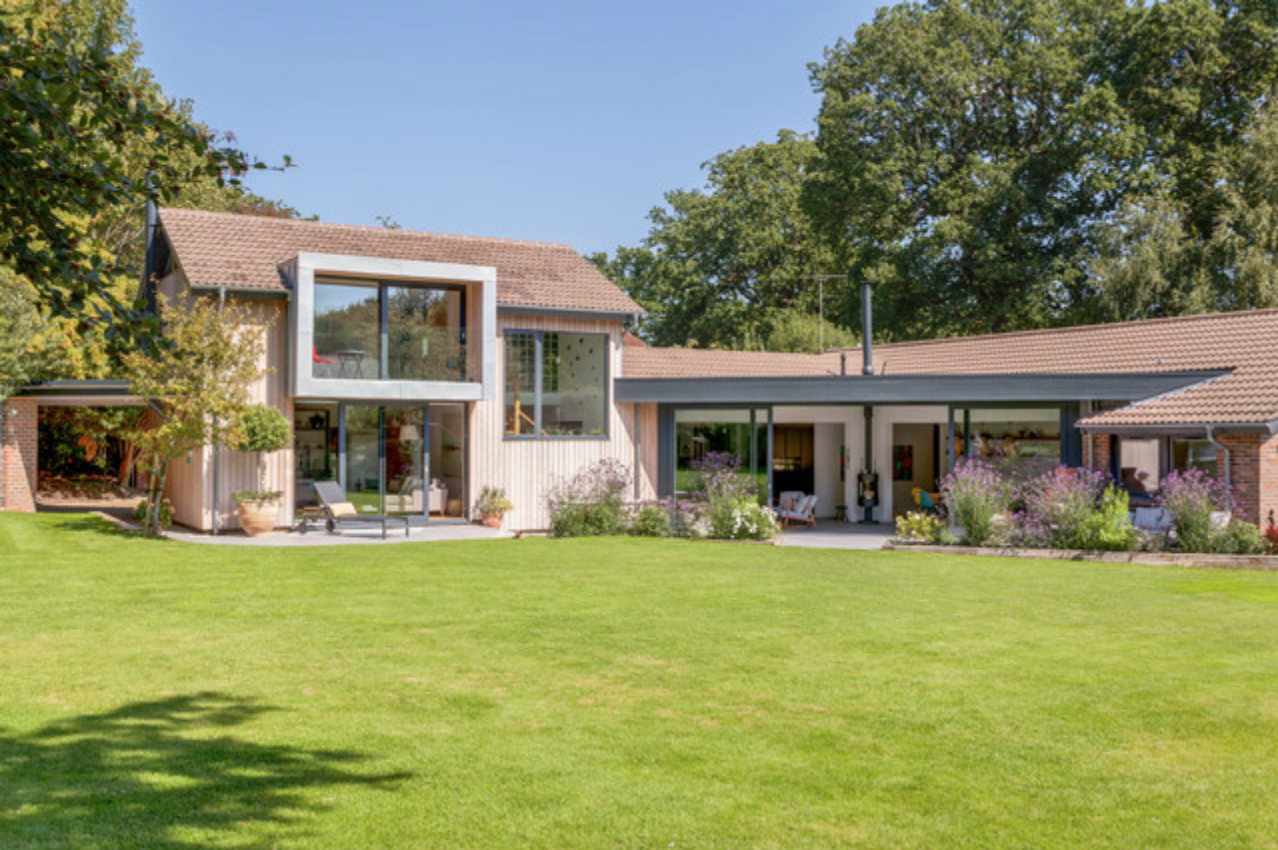The Keys to a Good Extension
By Max Birkin for House of Henley
Extensions are a tricky topic. Fiddling about with the structural integrity of your home is not something to be taken lightly, but it isn’t a huge exaggeration to suggest that an extension may very well change your life. Whether you need an extra bedroom but can’t bear to leave your street, yearn for a home office so you can Zoom away from noisy children or just want a separate room for the washing machine, a good extension can make a huge difference to our day-to-day lives. Oh, and it is also likely to significantly boost the value of your home. However, they aren’t all rosy. Be prepared for your daily life to be disrupted; you’ll find dust in your sock drawer, the downstairs loo will be covered in muddy boot prints and at some point you’re likely to find yourself cooking supper on a Calor gas camping stove. You’ll probably also have furious arguments with your other half in a Fired Earth warehouse and weep over the ridiculous length of tap catalogues. These moments are difficult but frequent, and the only way to get through them is to boil over, vent your frustration and then laugh and apologise to whichever of the builder/salesperson/spouse you’ve exploded in front of. It also helps to put your struggles into perspective – for all the drudgery choosing plug sockets entails, you are in the rather lovely position of making your home a better place. Do read the rest of our advice before you take a sledgehammer to the nearest wall, though.
Money, money, money
Picture Credit: House & Garden
There are a few important things to bear in mind when approaching an extension of any size or kind. First of all, you do need to thoroughly assess your finances. This sounds patronising, but we’ve all seen Grand Designs and unfortunately even the smallest of extensions can lead to prostration at the feet of your bank manager. A few more square feet of space should not come at the cost of financial insecurity and sleepless nights, so grab a spreadsheet and play accountants. Work out what you can comfortably afford and then factor in a contingency fund to cover unexpected costs. This should be about 10-15% of your overall budget, but if you live in an older or listed property or in a conservation area it makes sense to bump this up a bit. It is also worth getting a building surveyor in prior to doing any work; they will uncover things like asbestos, weak foundations and protected bats and you can factor all of these foreseeable costs into your budget.
Find the right people
When it comes to choosing a builder, play the field. Ask for recommendations and go local but get at least three different firms to give you a quote (preferably five, just to be safe). Ask them difficult questions – how many other jobs do they have at the moment? Are they also able to deal with lighting and tiling? What are some examples of similar jobs they have completed? Request a schedule of works and thrash out payments; some people offer bonuses to punctual builders but this does sometimes cause offence or result in shoddy work. Do be kind to your builders, though – cups of tea and bacon sarnies every now and then is an effortless way to keep the brickies happy, and if you’re refusing to let builders or tradesmen use the downstairs loo then you rather deserve for your extension roof to leak. Sorry.
Know the rules
Picture Credit: Penton Architects Ltd
Planning is a brilliant (and almost exclusively English) small-talk subject if ever you’re lost for words at a dull party; it is also rather a drag when it comes to applying for an extra dormer window. Some extensions in some areas may come under ‘permitted development rights’ meaning you wont need to submit a planning application and can build more freely (within limits prescribed by the local council, usually regarding height and maximum square footage of an extension). However, most of the time that shiny new kitchen is at the mercy of a planning officer. Submitting applications for planning can get very expensive, especially if it is rejected time and time again and you are constantly making revisions, so it pays to choose a local architect who has plenty of experience with what will and will not pass muster at the council offices. An equally prudent move is to sneak a peek at neighbouring houses; if the Smiths at No.8 have extended in a similar way to what you are planning, ask them about the planning process and poach their architect.
Think smart over big
Picture Credit: Kitchen Architecture
There are two obvious ways of extending; you can convert existing spaces, like a loft or a garage, or you can build additional space onto the current footprint of your property. The former is often the best as it can usually be done under permitted development rights and generally costs less than an out-and-out extension. Additionally, these sorts of conversions won’t infringe on precious outdoor space. Loft conversions are a particularly prudent move; the average cost of one is about £40,000, but they can be done for as little as half of that, and adding an extra bedroom to any home is likely to quite significantly inflate its value. Some building firms specialise in loft conversions, and they can speedily and efficiently complete the average-sized project in just a few months. Equally, garage conversions are an effective way of turning an outdated dumping ground into an extra bathroom and utility room or adding space to a kitchen. Just be careful to integrate these properly into the elevation of a house - you don’t want it to be obvious that where there now an incongruous PVC French window there was once a roller door.
Building an actual addition to a house is obviously the more exciting extension option; it is the opportunity to carve out more house from nothing, and there is a real awe to be found in tracking the journey from muddy trench to a light-filled, centrally heated, fully functional living space. However, the temptation of huge amounts of new space, shiny new fittings and new rooms can lead us to forget the existing property. Often, an incredible new kitchen-diner that spans the back of a house can leave other rooms dark and neglected; there may now be an abundance of square footage, but this sort of blind extension-mania does not always add value to a property. The best advice here is to hire an architect. They will listen to your needs, assess the situation, and come up with a solution that you most likely won’t have considered. Think of all the incredible back rooms created in thin London terraces simply by putting a roof over the side-return and gaining a metre and a half of space, or the transformation achieved by cutting a large window into a wall and opening up views to the garden. Bigger is not always better, and a carefully conceived extension that makes use of existing space will not only be cheaper, but is likely to make your home far more attractive to future buyers. Whatever extension you decide upon, the most important things to remember can be summarised in pithy little schoolroom bon mots - Expect the Unexpected and Be Prepared.
Follow House of Henley on Instagram by clicking here.
Subscribe to receive House of Henley blog posts straight to your inbox.
Check out House of Henley’s Official Amazon Page - Please note, these products are affiliate links and we may receive commission from qualifying purchases.



